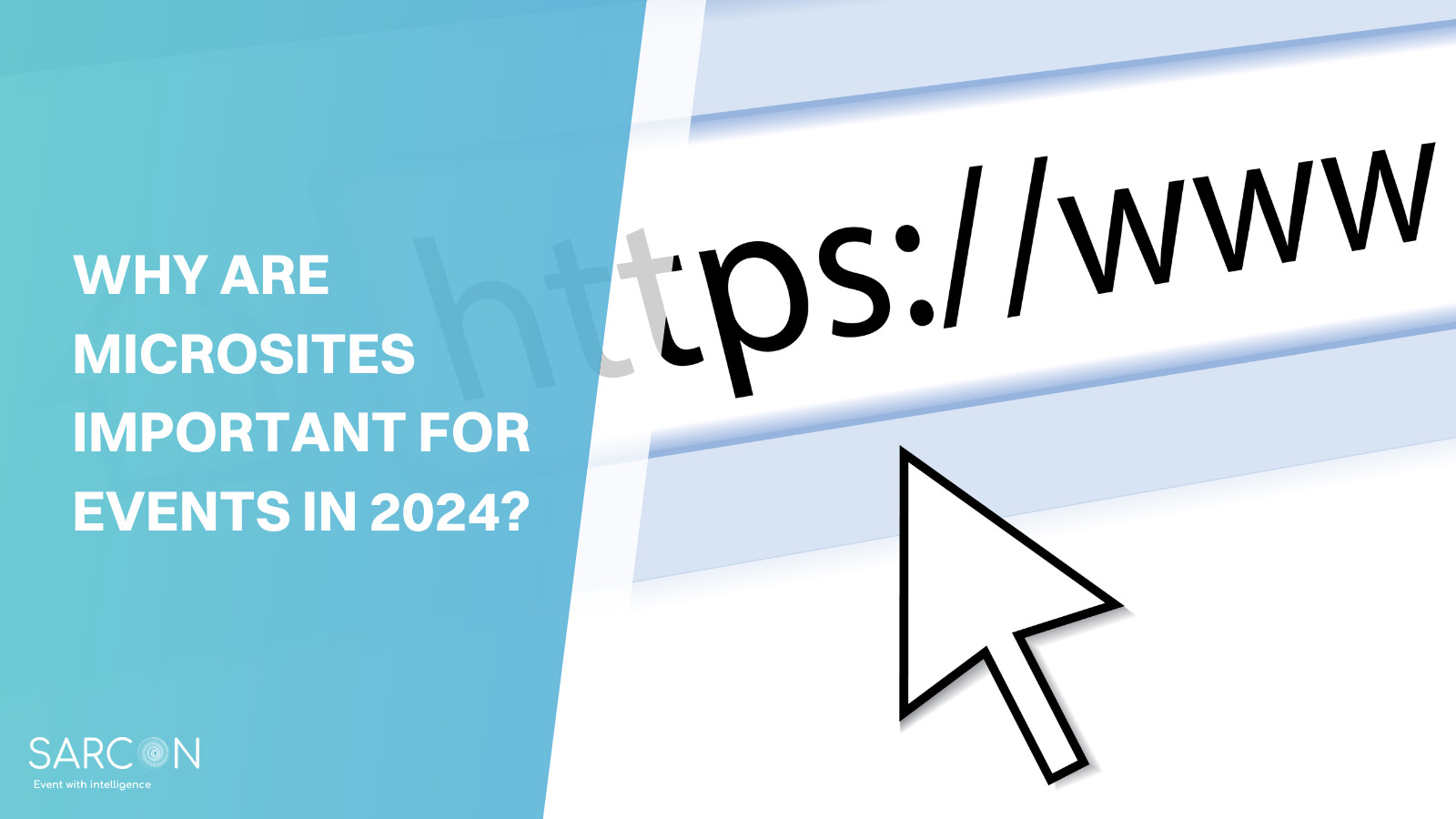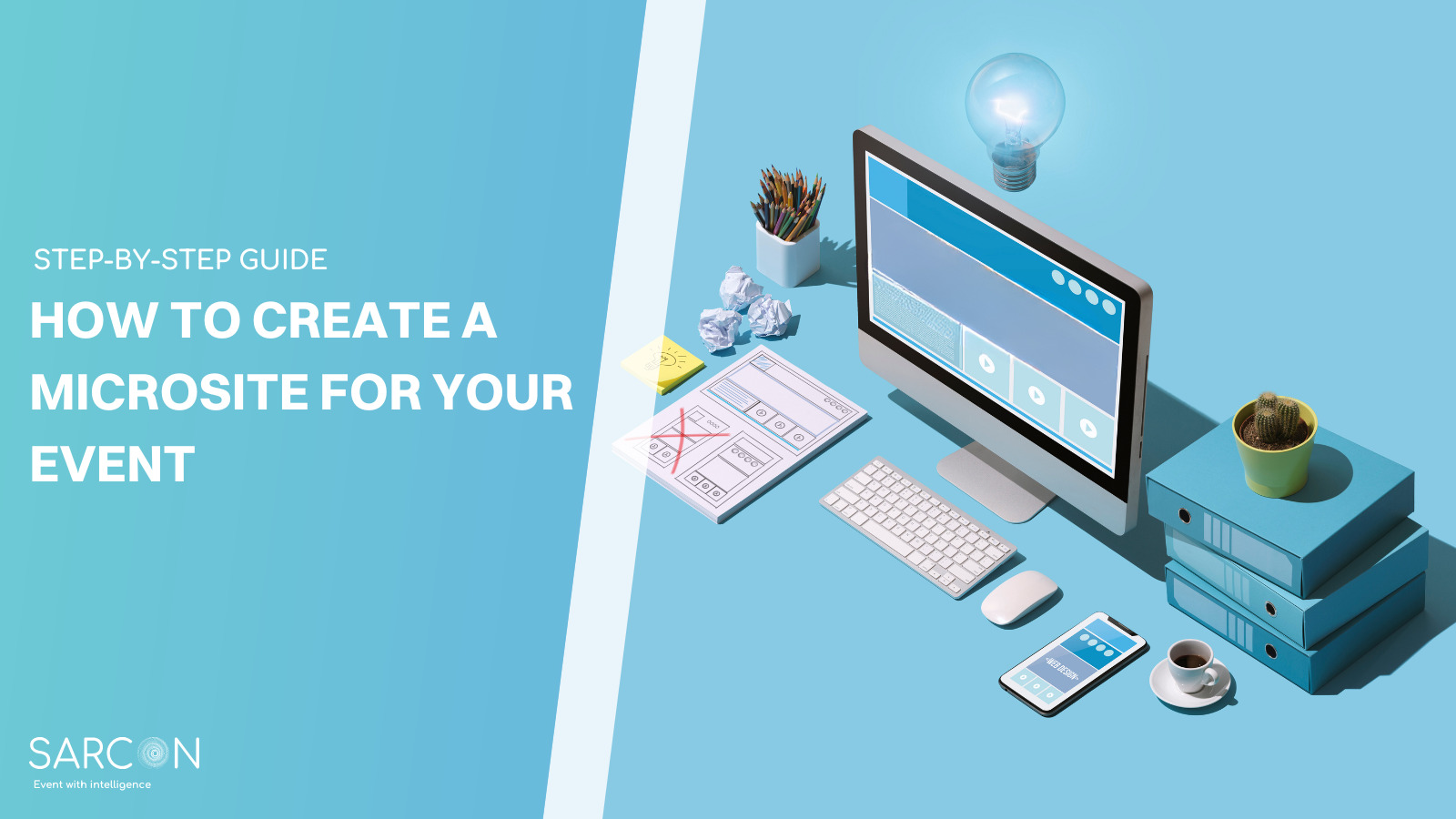Have you ever wondered why some events create a lasting impact while others fade away into oblivion? The secret often lies in the details, and one such detail is the strategic use of event microsites. Today where attention is the new currency, capturing and maintaining your audience’s interest is crucial.
Event microsites serve as powerful tools in this quest, offering a tailored online space that amplifies the essence of your event. They’re not just a trend; they’re a pivotal component in the event management toolkit. This article delves into the art and science of creating impactful event microsites that captivate and engage.
Understanding Event Microsites
Event microsites are uniquely designed web spaces, often encompassing a single or a small collection of web pages, focused exclusively on promoting and enhancing an event. Diverging from traditional, broad-spectrum websites, these microsites offer a laser-focused approach, catering to specific audiences with highly tailored content and experiences. This targeted approach enables event organizers to deliver a more personalized, engaging user experience, significantly boosting attendee interest and participation.
6 Essential Tips for Crafting an Impactful Event Microsite
1. Establish a Unique Domain
Consider setting up a subdomain or owning a separate domain address for your landing page. This step is crucial in creating an exclusive identity for your event. A unique domain or subdomain (like event.yourcompany.com) makes your microsite easily accessible and memorable. It separates the event’s identity from the parent website while maintaining a connection to your brand.
2. Optimize for Search Engines
Focus on your site’s SEO to expand your registrant demographic. Search Engine Optimization (SEO) is vital in increasing your microsite’s visibility online. By integrating relevant keywords, meta descriptions, and SEO-friendly content, you boost your chances of appearing in search results, attracting a wider audience.
3. Ensure Ongoing Relevance
Plan the long-term relevance of your microsite with regular updates. Keep your audience engaged by consistently updating your microsite with the latest event information, resources, and relevant material. This approach not only maintains interest but also positions your microsite as a reliable source of information.
4. Run Your Microsite Full-Time
Consider operating your microsite continuously. By keeping the microsite active year-round, you create a central hub for both new and loyal participants to stay informed about current and upcoming events. This strategy enhances user engagement and builds anticipation for future events.
5. Align With Your Brand
Combine branding with your main company and design a logo for your event. Ensure that your event’s branding aligns with your overall company image. Use logos and design elements that resonate with your company’s branding, creating a sense of familiarity for your audience. Employing replicable templates across various events can streamline the design process and ensure brand consistency.
6. Integrate an Event Calendar
Embed an event calendar for easy navigation. If you’re hosting multiple events, an integrated calendar is invaluable. It allows visitors to filter and search for events that are most relevant or conveniently located for them. This feature enhances user experience by simplifying the process of finding and registering for events.
Tips for Promoting Your Event Microsite in 2024
Creating an engaging and effective event microsite is a crucial step in promoting any event. However, the creation of the microsite is just the beginning. To ensure its success, you need to promote it effectively. Here are six tips for promoting your event microsite:
1. Leverage Social Media Platforms
- Create a Buzz: Use platforms like Facebook, Twitter, Instagram, and LinkedIn to create excitement about your event. Regularly post updates, sneak peeks, and behind-the-scenes content to keep your audience engaged.
- Hashtags and Handles: Create a unique hashtag for your event and encourage followers to use it. This not only boosts visibility but also helps in tracking the conversation around your event.
- Strategic Posting: Develop a content calendar for your social media channels. Include a mix of posts like teasers, speaker introductions, countdowns, and user-generated content. This variety keeps your audience engaged and looking forward to your next update.
- Engaging Visuals and Videos: Utilize eye-catching graphics, short video clips, and live sessions to draw attention. Visual content often has higher engagement rates and can effectively convey the excitement of your event.
- Social Media Advertising: Consider using paid social media advertising. Targeted ads can help you reach a broader audience that aligns with your event demographics.
2. Email Marketing
- Personalized Invitations: Send out personalized email invites to your existing database. Make sure the emails are visually appealing and include a clear call-to-action (CTA) directing recipients to your microsite.
- Regular Updates: Keep your audience informed and excited with regular email updates about the event, including speaker announcements, session highlights, and any special features.
- Track and Optimize: Use analytics to track open rates and click-through rates. This data will help you understand what works best and allow you to optimize future emails.
3. Search Engine Optimization (SEO)
- Optimize for Keywords: Conduct thorough keyword research to identify what potential attendees might search for. Include these keywords naturally in your microsite’s content, titles, meta descriptions, and alt tags.
- Mobile Optimization: Ensure your microsite is mobile-friendly, as a significant portion of your audience will likely access it via smartphones.
- Backlink Strategy: Try to get backlinks from reputable sites. This could include event directories, industry blogs, or partners’ websites. Backlinks improve your site’s authority and search ranking.
4. Collaborate with Influencers and Partners
- Influencer Collaboration: Choose influencers who not only have a large following but also high engagement rates. Collaborate with them to create unique content that resonates with both your audiences.
- Cross-Promotion with Partners: Work out a cross-promotion strategy with your partners. This could include joint press releases, shared social media posts, or features in each other’s newsletters.
For information on Influencer Marketing in event promotion click here
5. Utilize Paid Advertising
- Targeted Ads: Invest in targeted advertising on social media and Google. Use demographics, interests, and behaviors to reach potential attendees.
- Retargeting Campaigns: Implement retargeting campaigns to re-engage visitors who have shown interest in your event but haven’t registered yet.
6. Engage with Your Audience
- Interactive Content: Create interactive content like polls, quizzes, or contests related to your event and share it on your microsite and social media.
- Respond to Queries: Actively engage with your audience by responding to comments, messages, and emails. This helps in building a community and a sense of anticipation around your event.
- Community Building: Create a dedicated forum or group on platforms like Facebook or LinkedIn where attendees can discuss topics related to the event. This not only engages your audience but also builds a community around your event.
- Feedback Loop: Encourage feedback and suggestions about your event through surveys or direct communication channels. This not only engages attendees but also provides valuable insights for future events.
Future Trends and Innovations in Event Microsites
Staying informed about emerging digital trends and innovations is key to keeping your event microsite relevant and engaging. As we look towards the future, several trends and innovations are set to redefine how these microsites are designed, used, and integrated into the overall event experience.
1. Personalization at the Forefront
In the future, expect to see microsites that offer a highly personalized experience for each visitor. Artificial Intelligence (AI) and machine learning algorithms will analyze a visitor’s past behavior, preferences, and engagement to tailor content, recommendations, and interactions. This could mean custom schedules for conference attendees or personalized greetings and offers for repeat event-goers.
2. Seamless Integration with Social Media and Virtual Reality
Social media integration is already a staple for event microsites, but future iterations will take this a step further. Live social media feeds, direct posting capabilities, and integrated chat features will allow for real-time engagement. Moreover, Virtual Reality (VR) could be integrated into microsites, offering virtual tours of event venues or immersive previews of what attendees can expect.
3. Enhanced Interactivity with Augmented Reality
Augmented Reality (AR) will bring a new level of interactivity to event microsites. Users could, for instance, view 3D models of products, engage in AR games related to the event, or access interactive maps. This technology can make the microsite not just an informational hub but an integral part of the event experience.
4. Real-Time Analytics and Dynamic Content
Future event microsites will heavily utilize real-time analytics to adapt content dynamically. As data is gathered on how visitors interact with the site, its layout, and content can change to reflect user preferences and behaviors. This ensures that the most relevant and engaging material is always front and center.
5. Sustainability and Accessibility
There will be a growing emphasis on making event microsites sustainable and accessible. This means optimizing for energy-efficient operation, ensuring compliance with web accessibility standards, and using eco-friendly hosting solutions. Sustainability and accessibility will not just be ethical choices but also factors that enhance brand image and attendee satisfaction.
6. Integration with Wearable Technology
As wearable technology becomes more prevalent, event microsites could sync with devices like smartwatches or fitness trackers. This integration could provide attendees with real-time updates, navigation assistance, and health and safety notifications during the event.
7. Advanced Registration and Networking Features
Future microsites will offer more sophisticated registration and networking features. AI-driven matchmaking tools can connect attendees with similar interests, while blockchain technology could be used for secure and efficient ticketing and identity verification processes.
Conclusion
The digital landscape of 2024 demands innovative, user-focused strategies in event microsite design and implementation. By incorporating these insights and staying abreast of evolving digital trends, event organizers can create highly engaging and successful events.


